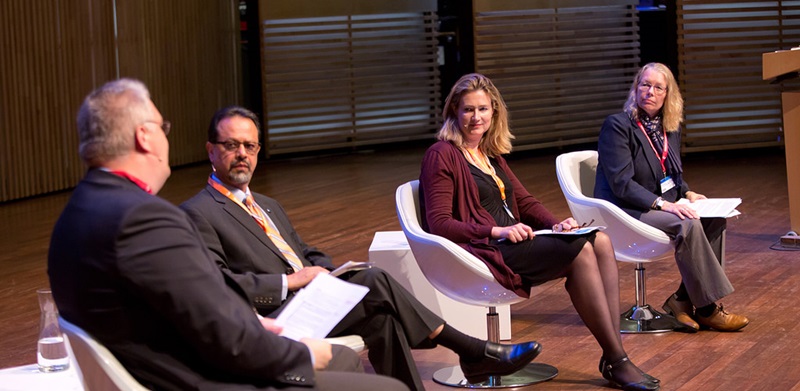In Amsterdam, a capacity filled session during the European Foundation Centre conference explored how philanthropy can strategically engage in the Sustainable Development Goals (SDGs).
It’s clear that philanthropy has the potential to engage in implementation of the SDGs. The SDG Philanthropy Platform was established as a global network for philanthropy supporting the goals. And this week, data analysis by the Foundation Center showed conservative estimates that philanthropy will invest $364 Billion in the SDGs by 2030.
What remains a bit unclear is how funders working in countries across Europe might use the SDGs for their work at home.
Throughout the session, several reoccurring themes highlighted possible engagement:
- Enabling new partnerships and collaboration: The SDGs provide a shared platform to leverage impact, funding, and knowledge. As governments implement the SDGs, they need to understand and utilize the intellectual firepower of philanthropy — including funders’ experience in building capacity, supporting advocacy, establishing local and global networks of partners, and more.
- Breaking down silos across goals and convening conversations: Philanthropy can build bridges between sectors and support knowledge exchange across organizations and borders. The Ford Foundation shared how in South Africa, they now convene grantees working on different focus areas within the same geography. These organizations may not currently connect their work, but to achieve the SDGs, holistic approaches to local challenges are needed. For the SDGs, philanthropy can convene both local and global conversations.
- Strengthening local enabling environments for philanthropy: The Financing for Development conference was perhaps the first global consensus on the need for private sector and philanthropy financing to achieve the SDGs. To support the SDGs, philanthropy needs a strong enabling environment. UNDP Kenya explained how their local SDG Philanthropy platform pushed back against a draft law restricting foreign funding for NGOs, on the premise that these restrictions would make it more difficult for SDGs to be achieved locally. In many other geographies, funders can support their grantees and partners to advocate for laws and regulations that enable philanthropy to support the SDGs.
- Taking calculated risk and funding data and capacity building: Philanthropy can often take calculated risks that multilateral and bilateral development funders cannot, whether investing in innovation or committing funding for longer time-periods. Philanthropy can also invest in building capacity of NGOS, city governments, and others funders to learn more about and engage on the SDGs. Data is a key opportunity to strengthen both the sector and individual institution’s engagement in the SDGs, including building capacity of local partners to gather and use data, ensuring that if we want to leave no one behind, we have data to identify everyone within our communities.
As European funders look to utilize the SDGs, a potential first step for may be mapping what goals funders are already supporting. Funder can compare local-level needs analyses to SDG targets, to see which goals a community may not easily achieve by 2030. Having a clearer idea of both what targets matter most locally and what goals align with your foundation’s ongoing work creates opportunities to think strategically around new collaborations and galvanizing others to join your work.
For European funders focused on domestic challenges, there may be more questions than answers around the SDGs. This reflects the questions we found when convening US foundations over the last six months to discuss how the SDGs apply at home. We are all only 9 months into a 15 year process, so there remains ample time and opportunity for funders to find ways to engage at home and abroad within our shared global language of the SDGs.
For more discussion on the SDG debate, listen to our Alliance Audio podcast.
Natalie Ross is members relations director on Council on Foundations.







Comments (0)